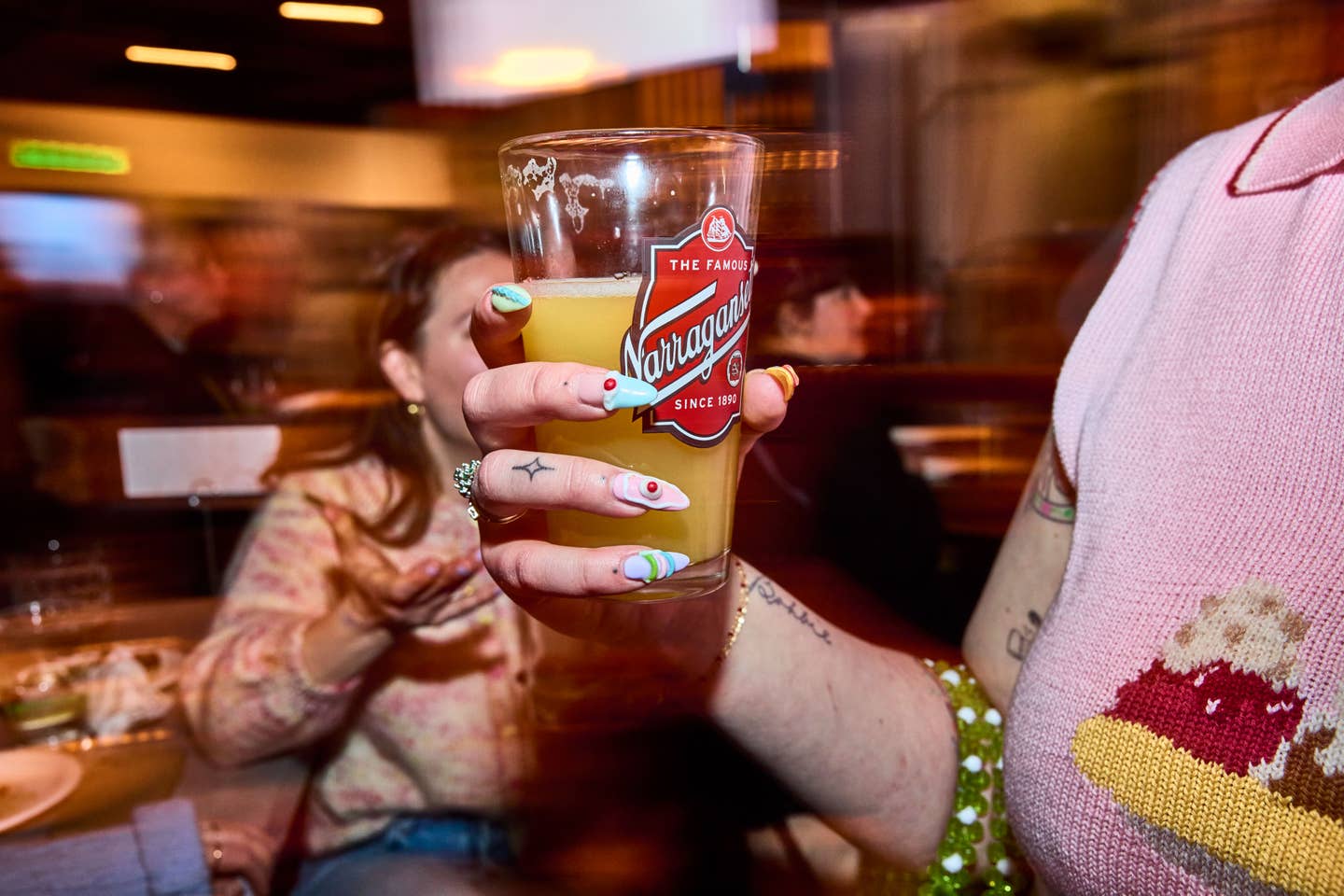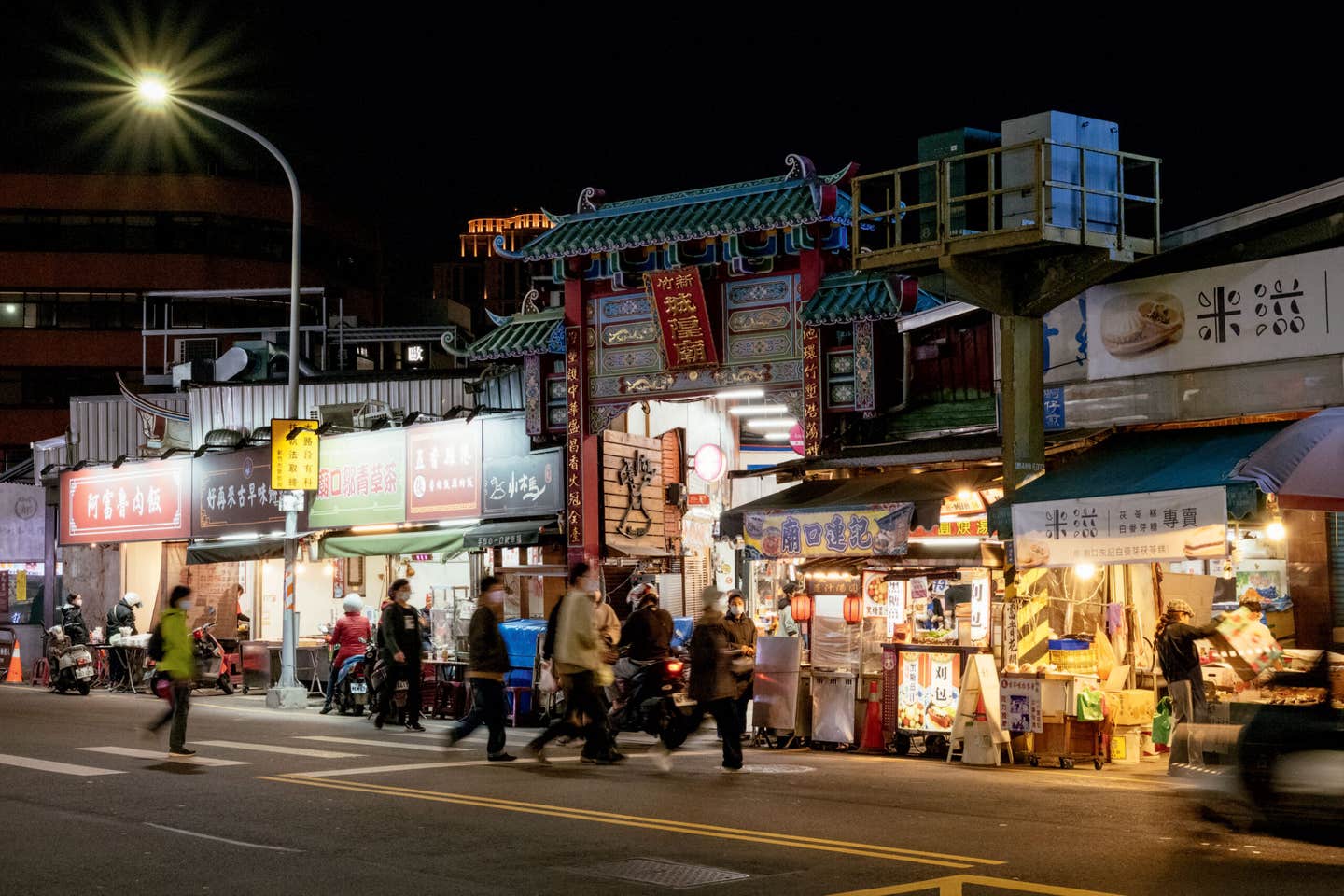
How a Cookbook Captured the Heart and Soul of Taiwanese Cuisine
Clarissa Wei’s ‘Made in Taiwan’ walks a fine line between the personal and political—and celebrates the country’s distinct culinary treasures.
This recipe is brought to you by the SAVEUR Cookbook Club, our passionate community of food-loving readers from around the globe celebrating our favorite authors and recipes. Join us as we cook through a new book every month, and share your food pics and vids on social media with the hashtags #SAVEURCookbookClub and #EatTheWorld.
“Here in Taiwan, we mind our own business.” Thus begins Clarissa Wei’s debut cookbook, Made in Taiwan. It’s not the most expected way to start a cookbook, but it’s Wei’s way of staking a claim to her nation’s culinary and cultural self-determination. While many of the dishes enjoyed in Taiwan have Chinese roots, here Wei reclaims and reframes the Taiwanese culinary story as one that thrives independently of Chinese history and governance.
Wei’s parents were raised in Taiwan in the 1960s, while the island was governed via martial law by the Nationalist Chinese government, and at a time when, as Wei notes, schoolchildren were “taught more about the history of China than the history of their own people.” Yet Taiwan was considered the ideal place to sample regional Chinese cuisine at the time, both because of what the ruling political elite consumed and the many traditions and techniques brought by recent immigrants to the nation. For though the island may be relatively small, it has produced some of the world’s most extraordinary dishes—the proliferation of xiao long bao soup dumplings, made world-famous by Taiwanese vendors, “crystal” meatballs stuffed with pork and fried shallots in a delicate rice paper wrapper, and brittle threads of pork floss sprinkled over pillowy tangzhong milk bread.
As Wei explains, the specific joy of Taiwanese cooking is how it demonstrates the nation’s resistance against cultural and culinary homogenization. “It’s my strong opinion,” Wei writes, “that the food of a place can tell a story far more vividly than any textbook, and the food of Taiwan tells a tale of a country that has been subjected to multiple colonial influences but remains vibrant in its self-expression.”
When I spoke with Wei from her home in Taipei, she asserted that her book was shaped by her acute awareness of the present-day political atmosphere, as well as her growing appreciation for the complexity of Taiwanese identity and history. She writes lovingly of the island’s many traditions, from the Indigenous foods nurtured by the lush climate, to the dishes introduced by Chinese immigrants in the mid-twentieth century, to the fried delicacies sold at night markets and outdoor beer restaurants (rèchǎo), lightly seasoned with the trinity of garlic, ginger, and scallions. Wei collaborated with Ivy Chen, a cooking instructor based in Taipei, to develop accurate recipes, aiming to “tell the story of Taiwan as best we can before it’s too late.” Wei’s passion is both to honor and expand the narrative of Taiwanese cuisine and culture. “I always say that Taiwan is talked about in either one of two ways: it’s either a potential World War III, or it's a place for night markets and beef noodle soup,” Wei told me. “There’s a disconnect there, where it’s all doom or gloom or all tourist consumption without asking where things come from. I wanted to bridge those two narratives.”
This book is fueled by a palpable sense of urgency. As someone who’s written about a lot of different topics in food, how did you decide you were going to focus on the story of Taiwanese food, and how did you decide to tell this story via a cookbook?
Living in Hong Kong in 2019-2020, I was present for the entirety of the pro-democracy protests and COVID; when I left in summer 2020, it was the day they passed the national security law. So I saw how Hong Kong transitioned from a vibrant democracy to what is now very much a part of China, and it was shocking how quickly that happened. During this time, I would fly back to Taiwan all the time (it’s a one-hour flight), and it was clear to me that people in Taiwan were watching this from afar, and they felt that urgency, too. They elected the current president, Tsai Ing-wen, to her second term, with the greatest number of votes in Taiwanese history, because people were compelled to vote for someone who was staunchly anti-China and pro-keeping Taiwan safe.
So I pitched the cookbook with that political and social urgency in mind. I’d done a proposal in the past that was far less political, more of a general compilation of Taiwanese recipes, and it didn’t go anywhere. But once the world saw the Hong Kong protests, and once they saw Stop Asian Hate, and once COVID happened, I finally was able to sell this book. I had a different approach than the journalists who came in to cover potential cross-strait tensions and the prospect of World War 3. I wanted to use food as a way to contextualize and celebrate the people of Taiwan.
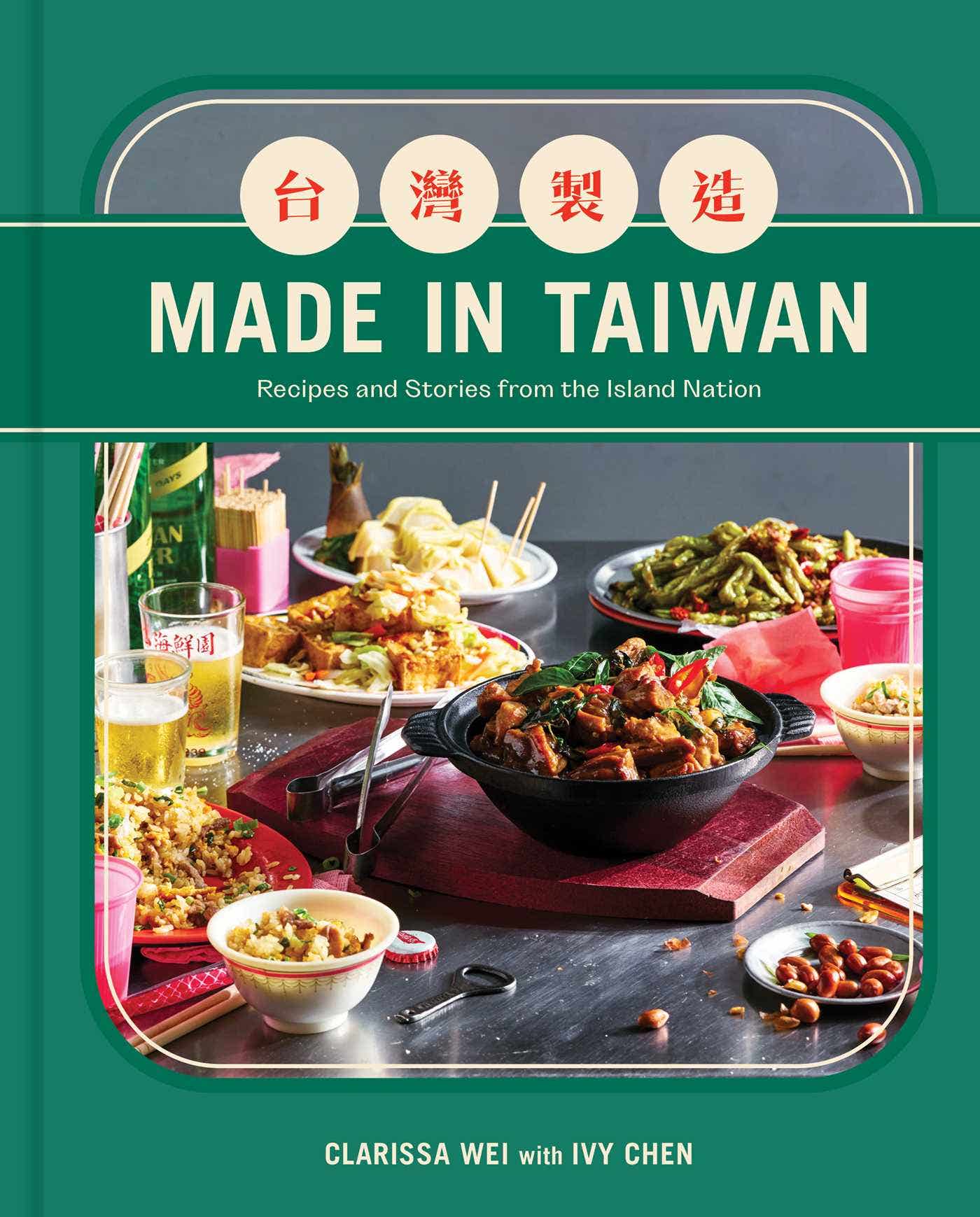
If someone described this book as a “political cookbook,” how would you feel about that framing?
That's a really good question, because I feel like lots of people, including me, get confused. This book isn’t meant to be a political statement per se, but people think it's political because Taiwan is constantly being politicized. But I wanted to capture the zeitgeist in Taiwan, and how people in Taiwan today see themselves. The majority of people here identify as Taiwanese, or as a mix of Taiwanese or Chinese, and a very small minority only sees themselves as Chinese, and I think my book embodies the former, not the latter. But the fact that that's controversial is really interesting. Whatever my take, I don’t want my own feelings, or my perception of the country’s tensions, to override the book. The first 40 pages offer a portrait of what’s happening in Taiwan, but the rest is really a celebration of the food and the people. But you need the preface to frame that celebration.
How did you find your co-author, Ivy Chen, and how did you develop a process that incorporated the stories of so many contributors around Taiwan?
Ivy has been teaching about Taiwanese food for 20 years, and she was such a natural fit for this project, because she grew up here, and she's from a different generation. (I think a lot of people have grandmas or other elders who taught them how to cook, which I didn’t have.) Tapping into Ivy’s knowledge made this book what it is today, especially as she could pinpoint specific ingredients that could make or break the dish. For example, in Japan they use bonito flakes to create flavor in broths; in Korea, they’ll use anchovies. Here in Taiwan, we use the dried olive flounder, this bony little fish which you can’t really find in markets anymore. But Ivy knew exactly which ingredient it was, and what gave soups their distinct Taiwanese flavor, and it made the book much richer and more nuanced.
I also wanted to give credit to every single person that we interviewed. In so many cookbooks, interviewees are seen as a backdrop—someone you talk to, then leave, and you never see them again. I wanted this to be more of a historical document or a work of journalism, where you give credit where it’s due. I’ve been inspired by cookbooks that are doing that, such as Hawa Hassan’s In Bibi’s Kitchen, or Toni Tipton-Martin’s Jubilee, and I wanted to do that for Made in Taiwan. So we shared credit, and every single person we interviewed got a copy of the book, and it’s cool to see how excited they are to have their stories out in the world.
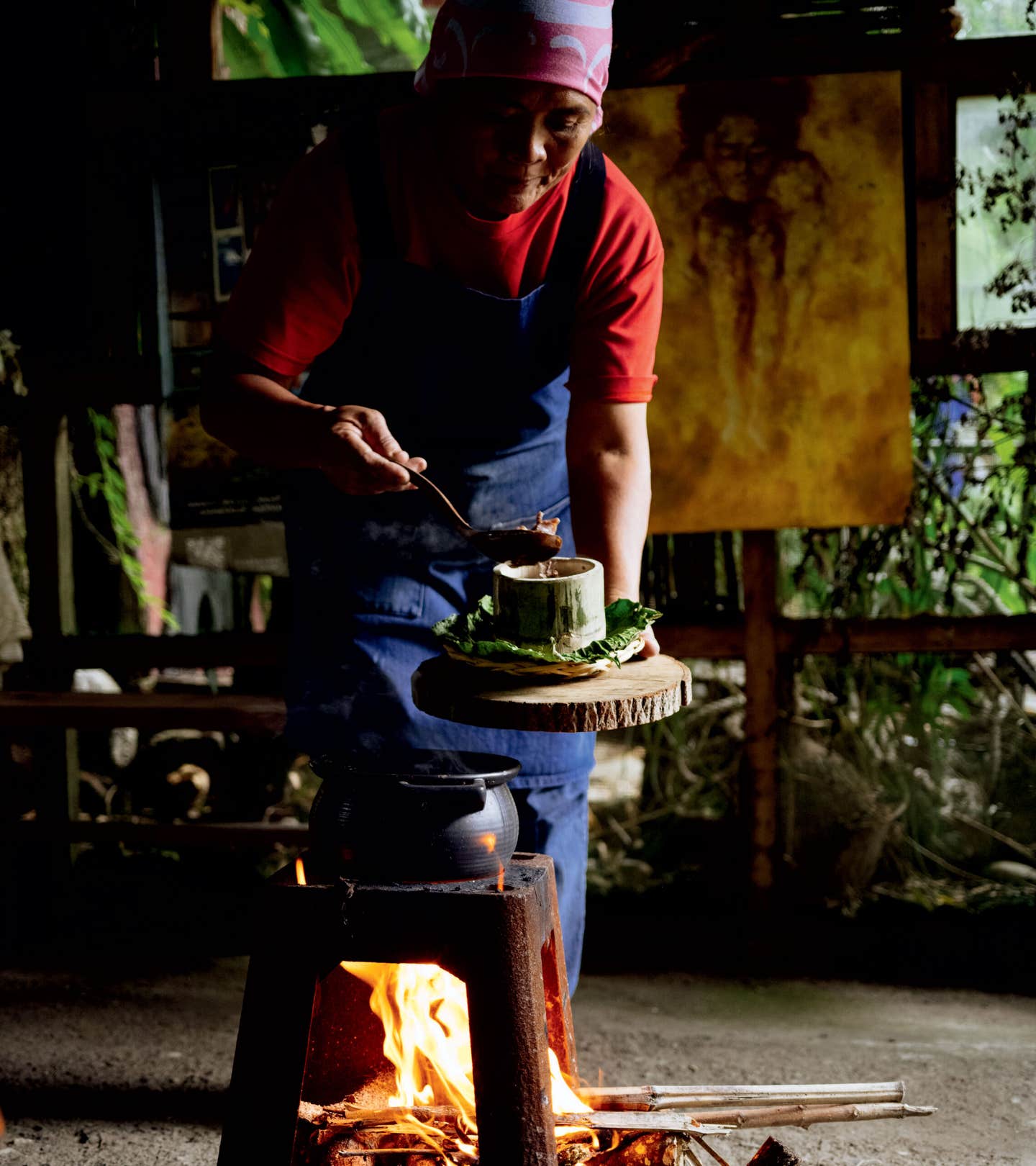
Your guide to the Taiwanese pantry feels like a walk through Taiwan’s history as a colonized nation. What should we understand when we use these ingredients?
The biggest realization for me was that these pantry items are our history, that they were made in Taiwan. A lot of them are made with Japanese-era colonial recipes, because the Japanese monopolized a lot of our core industries for over 50 years–so the way soy sauce, rice wine, black vinegar are made reflect the Japanese style. But there are also condiments that you can only find in Taiwan like soy paste, or the sweet red sauce known as Haishan sauce. Someone will always argue that Taiwanese cuisine is just a branch of Chinese food, but when you look at the history of these condiments, they evolved from Taiwan’s distinct history. I didn’t really understand how Taiwanese cuisine was different from Chinese cuisine before breaking down the pantry items, and it was a huge help in developing the thesis of the book.We have our own distinct food in our own distinct pantry, because we are a completely different country.
There are so many ingredients and textures and techniques in this book. Is there a specific Taiwanese textural or sensorial approach?
With Taiwanese food, it’s all about texture. And Q—that textural blend of both elasticity and chewiness, sort of like a gummy bear—flows through so many dishes. Even bread or noodles have a little bit of a spring and resistance to them. There’s a recipe in the book for a meatball soup, where the vendor told me that the meatball should be “so chewy that you should be able to play ping pong with it,” and that’s so central to the pleasure of Taiwanese food. Items like pork floss may not be for everyone, because it’s quite dry by design. But it was created because people needed to store their excess pork; and in the process, it gained a wispy, coarse texture that, when you put it over porridge or bread, becomes something quite distinct—very sweet, but also savory as well.
This book was created with an all-Taiwanese design team. What conversations did you have about the look of this book?
I met an amazing food stylist and photographer duo—Yen Wei and Ryan Chen—who work out of Tainan in an old soy sauce factory-turned-photography and pottery studio. Tainan is like the Williamsburg of Taiwan–it’s super hipster and I love it. When I visited their studio, I saw in the back room they had all these props and old antiques collected, and Yen wanted to incorporate them into the food styling. So I met them on that challenge, and reached out to a few museums that offered us bowls and dishes and tiles to photograph. While we were shooting, Yen kept telling me all the stories of the dishes, and so I incorporated the stories back into the book. (I’m so proud of the design of the book, and in particular the cover. I really love its color, because it reflects what you see when you look at Taiwan. That deep green is the color of our forests, our mailboxes, our passports. As it turned out, the book’s designer, Jen Wang, is Taiwanese-American, and she got it immediately.)
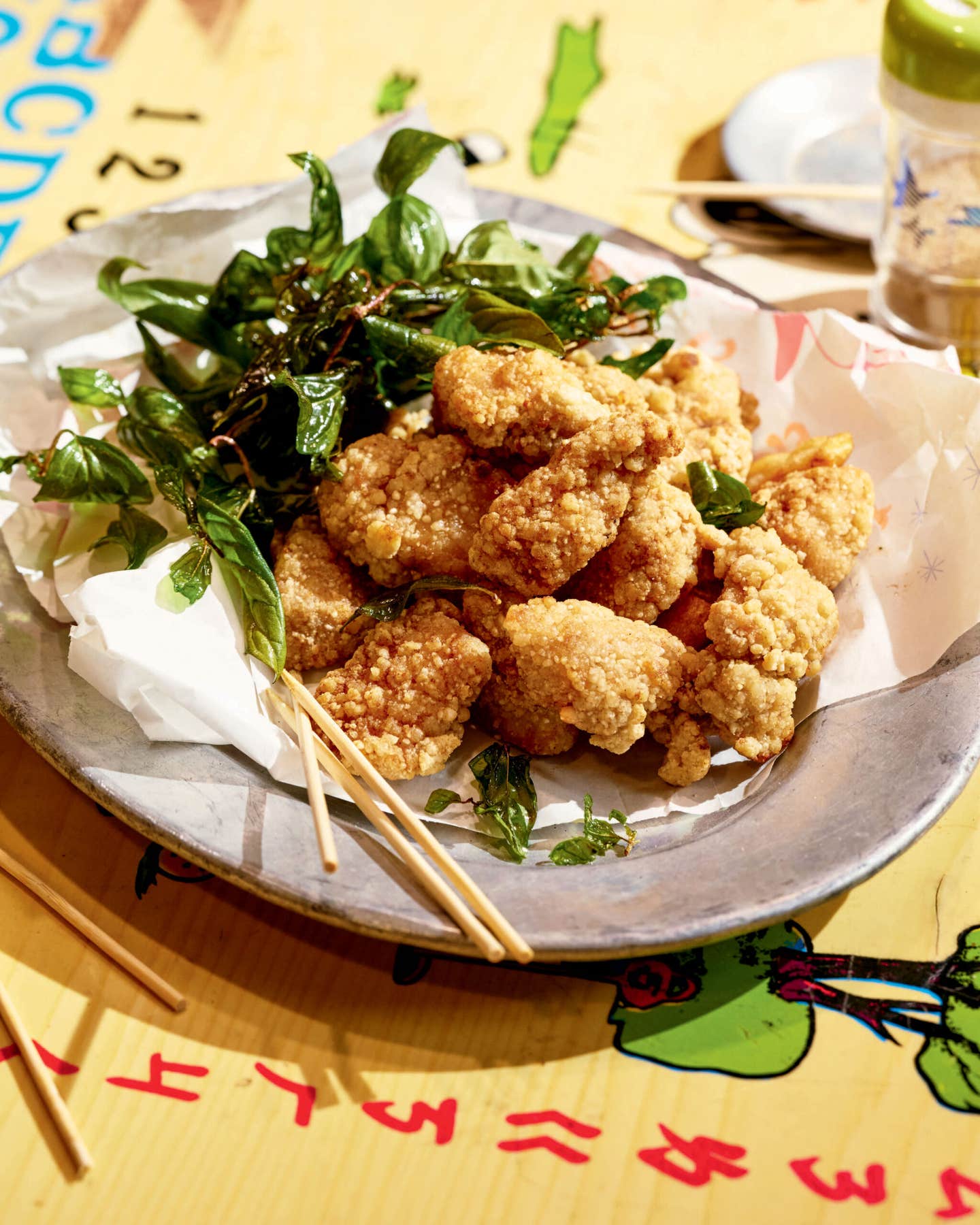
You call Tainan the “food capital of the nation,” the “snack city.” What is it about the city that makes it ideal for the maximalist snack culture?
Growing up, my parents only took me down to Tainan because that's where they're from, the oldest city in Taiwan. Then as I got older and I became a food writer, I was really confused why every single article focused on Taipei, never on Tainan. But it makes sense—because foreigners might fly into the capital, but if you ask any Taiwanese person, they will all tell you to go to Tainan. Street food culture came from there, and the idea of the one-stall special, which evolved around the periphery of temples. The first temples and markets were in Tainan, and it still has the densest concentration of temples in the entire island. So a lot of these street foods that are unique to Taiwan originated in Tainan, and once you know the history you see why.
The night markets you can find in Taiwan today are very different from the night markets of the past. How do you distinguish between the night market and the street vendor food culture?
Even street food itself is sort of fading away, in part because, as the older vendors that I interviewed revealed, they don’t want their kids to be one-dish specialists anymore. It’s low-paid, it’s hard work, and they want their kids to go to college and have a better standard of life. Also, the people who are entering the night market business now aren’t longtime street vendors, but young people who want to try out new concepts. So the markets don’t necessarily offer old-school dishes anymore—they offer things covered in cheese, or made Korean-style, or framed with quirky Instagram-ready aesthetics. The night market is becoming more youthful, more trendy, and also populated by more chains. Many of the foods are also made in central kitchens that are shipped to night markets all over Taipei—so you see the same vendors or same type of foods being served everywhere.
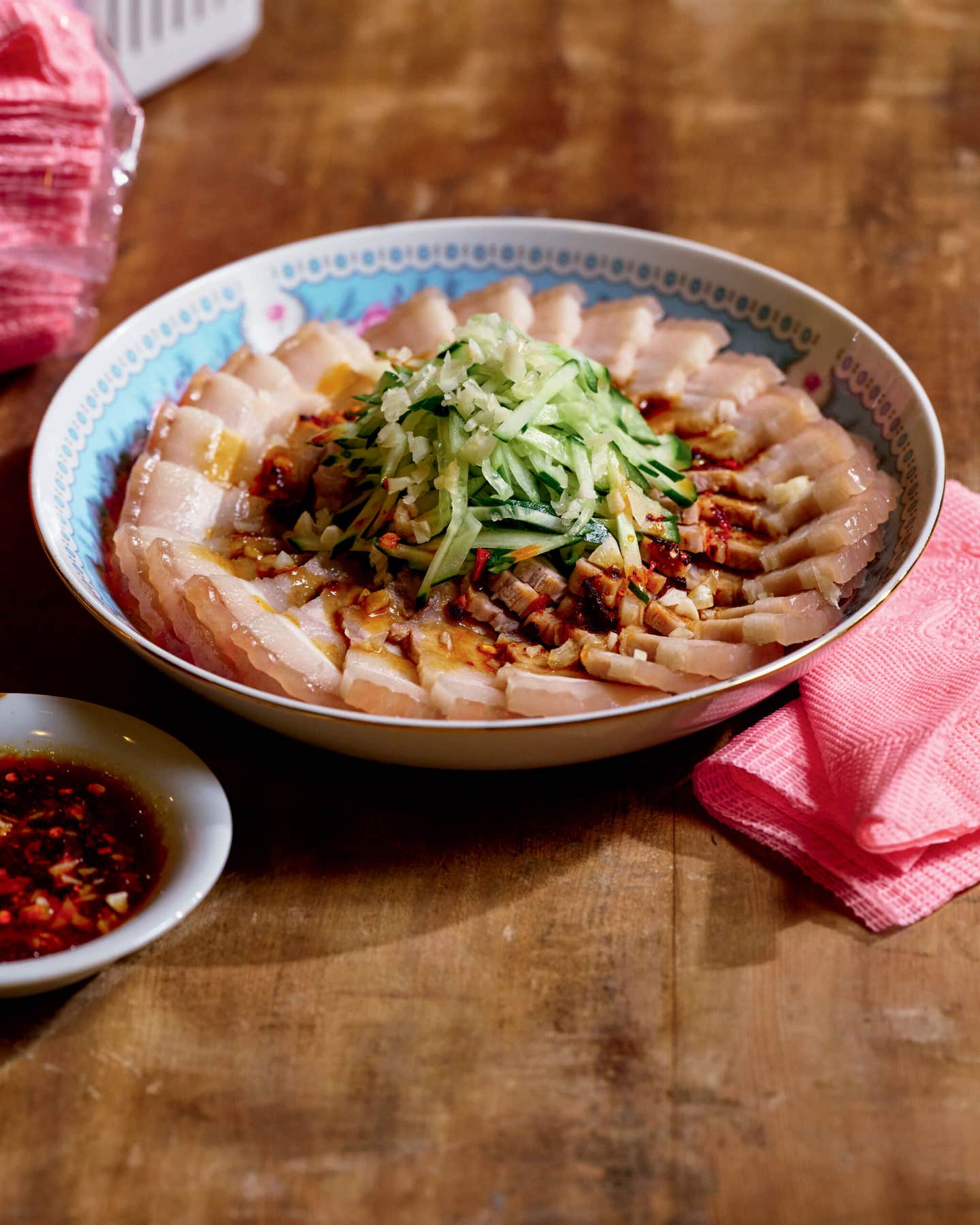
You also speak with a lot of affection about beer restaurants known as rèchǎo. How would you describe these spaces to someone who's never been in one of these restaurants?
It’s like going to your local pub, sometimes semi-outdoors—though now with climate change, most folks have indoor air-conditioning—and it’s family-style food that is greasy, full of flavor, and really diverse. The rèchǎo started in the 1980s, usually combining regional Chinese foods, Japanese condiments, and local seafood into their own genre of dining—and all of it has to be cooked fast, which was made possible by gas burners that were introduced across the island in that era. I think the rèchǎo represents how people really eat these days—it’s where most Taiwanese people will decompress after a long day of work. The night markets are more for Taiwanese-Americans or tourists from other countries, but if you check into a rèchǎo, you’ll see how actual Taiwanese people enjoy a great meal.
You give a whole section of the book to the Indigenous foodways of Taiwan. How do you see the continuing influence of those foods on contemporary Taiwanese food today?
There are 16 recognized Austronesian tribes in Taiwan, but that classification is very generalized, and was in many ways forced upon them by the Japanese, so it’s really hard to define. Every tribe has their own area, where what they eat is very specific to the region, so it’s difficult to expand the staples of Indigenous cuisine. Certain tribes have been able to promote ingredients that can be farmed, but it's still very difficult, because a lot of their ingredients still grow wild. But where you can really see the influence of Indigenous foods is in the fine dining scene. For example, we have a spice called maqaw—it tastes exactly like lemon pepper—and some Indigenous tribes will use it to season meat or sausages. Fine dining chefs are incorporating maqaw into their dishes as they learn about ingredients native or endemic to Taiwan. These young chefs are training abroad, in the United States and Europe, then they come back and redefine modern Taiwanese food while exploring their Taiwanese heritage and identity.
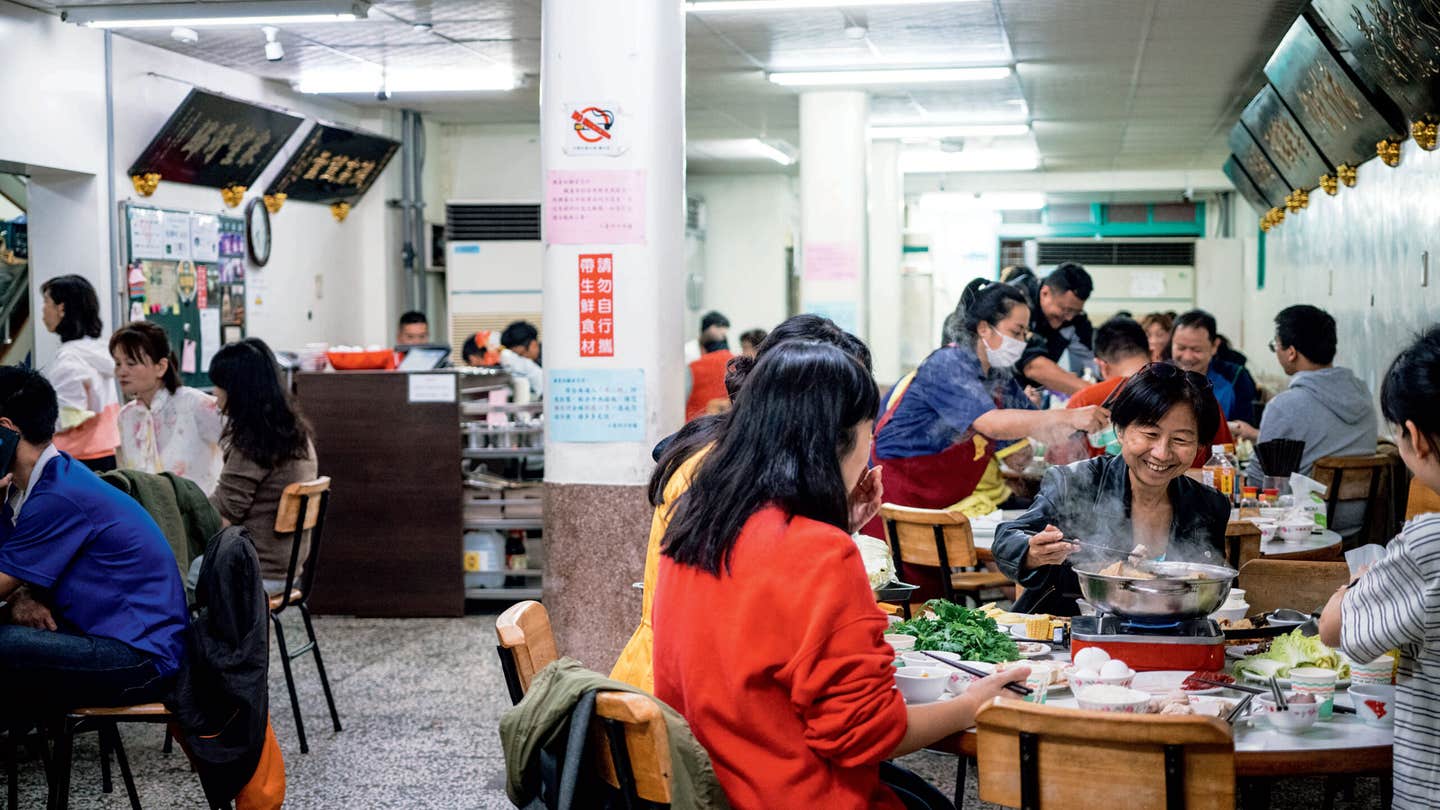
You explore some endangered culinary traditions, such as pastries made with the rice dough known as kueh. How do you see recipes in a book like yours carrying them forward?
There's a couple that I profile, Huang Teng-Wei and Chou Pei-Yi, who are actively trying to preserve these recipes, and they took me to their local wet market and introduced me to the kueh vendors, all of whom were grandmas over 70 years old, selling their kueh for a buck or two at most. It was really heartbreaking, because once these grandmothers pass away, you won't see these foods sold anymore. But no one values it here—if you go to Taipei, you see a lot of fancy chocolate shops and modern French bakeries instead. But I hope that by showing how much effort goes into the kueh, people in Taiwan will see why it’s worth preserving.
So many of the recipes we collected came from older folks, like the scallion pancake recipe offered by Tung Yu-Chu, who was in his nineties when we spoke. But many older generations don’t write things down, they don’t measure lengths or weights correctly. And that’s so necessary in preserving recipes, because without those measurements, dishes will be lost. The Western culture of writing cookbooks is such a beautiful thing, and I hope in the future there'll be more cookbooks like that here in Taiwan as well.
You bring up the point of certain dishes already being iconic—the beef noodle soup, for example. Are there other dishes that you would love to see rise to the same level of prominence?
One dish is braised minced pork belly, because it really should be popular everywhere—it’s more iconic in Taiwan than beef noodle soup, and it's so easy to make. Another one is the crystal meatball, because that embodies Taiwanese cuisine: very Q, very chewy. It’s seasoned with tapioca starch and sweet potato starch (two of our main carbohydrates) and stuffed with pork (the island’s main protein) and you can’t find it anywhere else in the world. So it’s an effective way to tell the narrative of Taiwan in a single dish. People might not love it everywhere due to the texture, but maybe it's a matter of time. Fifteen years ago I couldn’t have written a cookbook that included stinky tofu, but now people know it and love it. It's awesome how fast things have changed.
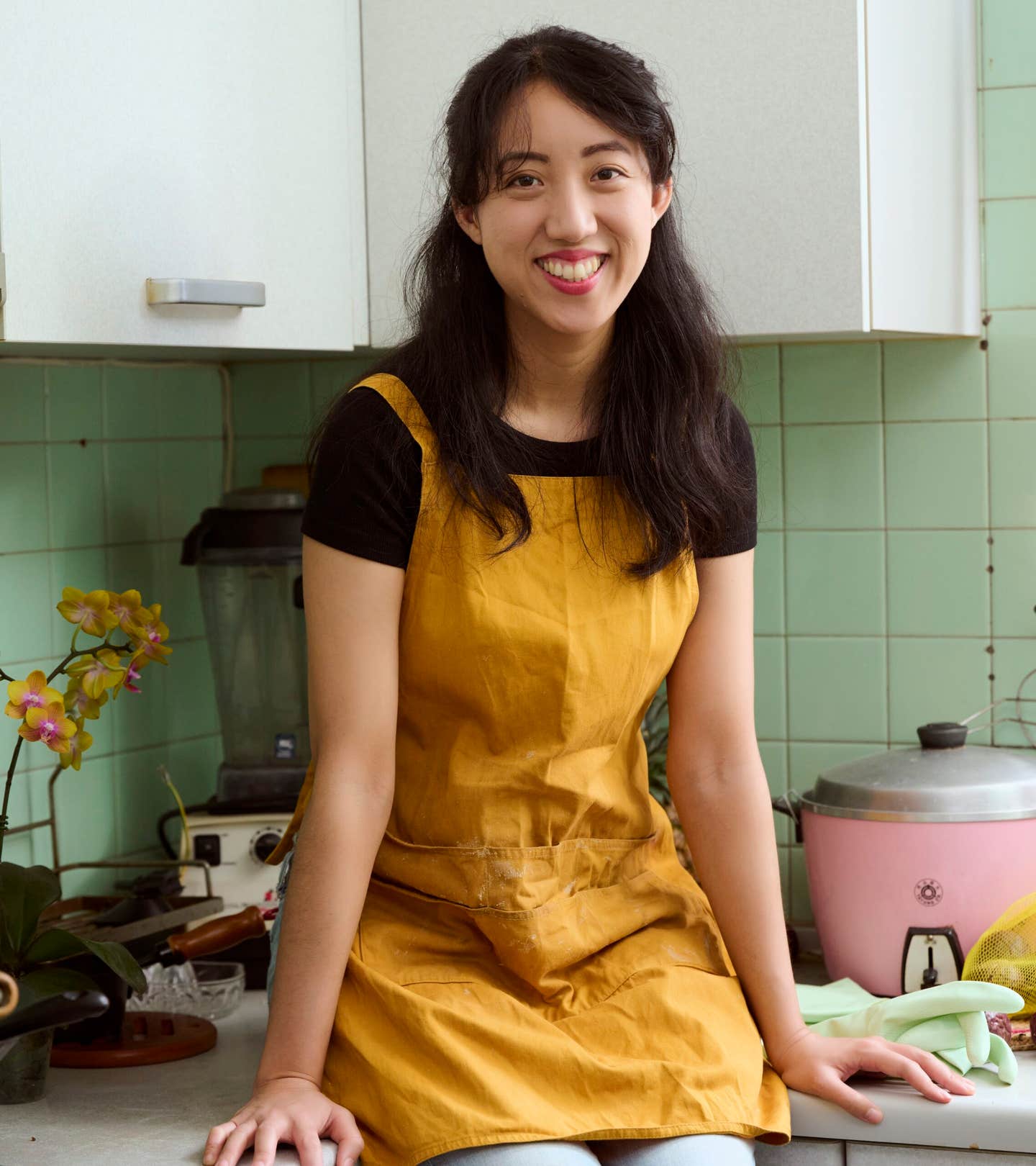
When you talk about family feasts, you mention your mom having a rule of six—the idea that six elements always had to show up on the table without fail: soup, seafood, meat, vegetables, rice, and fruit. If you were going to assemble your table of six, what would be on your table?
I think family-style food is very much designed for a big crowd, which is slowly fading in Taiwan—we have one of the lowest birth rates in the world, and a lot of young kids don't cook. But if you end up in a grandma's house, that configuration of six will be there, to ensure you don’t have a boring meal, but also to ensure your meal is balanced. My six-part meal would look like this: braised minced pork, daikon and pork rib soup, stir-fried sweet potato leaves, stir-fried clams with basil for a seafood element, and fruit (a must at all times). And fried rice for my carbs, of course. But I picked dishes that are easy to prepare, and some folks would rather put a huge amount of effort into their dinners. It takes a lot of work to make this meal, and if you had a really big family, you would pull out all the stops.
This interview has been edited and condensed for clarity.
Keep Reading
Continue to Next Story









